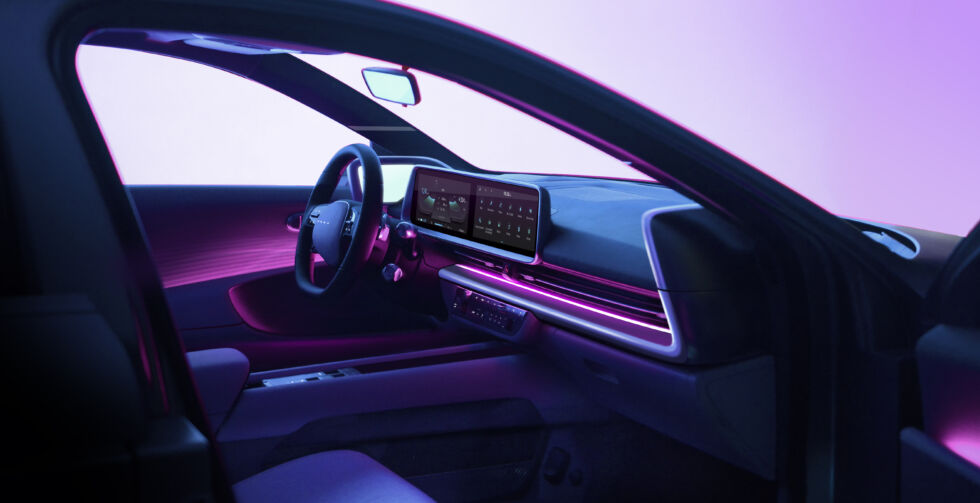

Here’s Hyundai’s next electric vehicle, the Ioniq 6 sedan
source link: https://arstechnica.com/cars/2022/06/heres-hyundais-next-electric-vehicle-the-ioniq-6-sedan/
Go to the source link to view the article. You can view the picture content, updated content and better typesetting reading experience. If the link is broken, please click the button below to view the snapshot at that time.

cheaper than a Model 3? —
Here’s Hyundai’s next electric vehicle, the Ioniq 6 sedan
Hyundai has translated the Prophecy concept into its curvaceous production car.
Jonathan M. Gitlin - 6/28/2022, 9:00 PM

The physical unveiling of the Hyundai Prophecy concept car was an early casualty of COVID, originally scheduled for the hastily canceled 2020 Geneva auto show. That didn't stop it from blowing my socks off once Hyundai sent some images over the Internet, however. At the time, I didn't think the Korean automaker would put the concept—which I described as the result of "a transporter accident involving a Mercedes CLS and a Tesla Model 3"—into production.
Obviously, I was being a fool because just as the Hyundai 45 concept morphed into the excellent Ioniq 5 crossover, the Prophecy has been translated into production as the Ioniq 6 sedan. Like the Ioniq 5, the Ioniq 6 uses Hyundai's new E-GMP platform for 800 V vehicles, but importantly, it's actually smaller (with a 2-inch/50-mm shorter wheelbase) and will be cheaper than the angular Ioniq 5. (Yes, this still confuses me, because 6 is more than 5, so one expects a bigger, more expensive car, plus the Ioniq 7 is going to be a large seven-seater electric SUV, due next year.)
The most notable change from the concept is the Ioniq 6's extra height, an unavoidable consequence of having to package a 6-inch (150 mm) slab of lithium-ion batteries under the cabin's floor. I asked Hyundai design chief Sangyup Lee if he had been tempted to stretch the production car's wheelbase to maintain the concept's proportions.
"This was the design and to be honest, it's what we pushed for at the design center. But the sales division and marketing decided that 4,485 [mm, or 176.5 inches] was about the right size," Lee told me.
AdvertisementIf you detect a hint of the past in the car's shape—particularly the profile—you're not mistaken. Lee told me that single curvature designs like the Stout Scarab of the 1930s was an influence.
As you might expect, some of Prophecy's details had to be toned down for the Ioniq 6, but like its boxy big sibling, pixellated lights play a big role at both the front and rear of the car. The show car's clear acrylic spoiler is now black plastic, but it also contains the central brake light, which performs a very Knight Rider-esque animation, sweeping from one side to the other.
"The pixel is something that bridges analog and digital together. And it's so unique, and the finer it gets, the more digital it becomes. The right balance of the pixel and light signature is a key in our design," explained Lee.
The front of the production car is a bit fussier than the elegant concept, though. This is by necessity, both to control airflow around, over, and underneath the car, as well as to package the car's various sensors (in that black strip). And we can probably forget the side-view cameras here in the US, as regulations don't allow them yet.
Hyundai wasn't sharing much in the way of technical specs when we saw the Ioniq 6 in London, but Lee was justifiably proud that the production car achieved a drag coefficient of just 0.21, which will make it one of the lowest-drag vehicles on sale. That should mean a fairly hefty range, especially if it uses the larger volume of a 77.4 kWh E-GMP battery—it's relatively small for an EV, which means a smaller frontal area, and the E-GMP-based EVs we've tested have managed at least 4 miles/kWh (15.5 kWh/100 km).
AdvertisementThe interior of the production Ioniq 6 is more personal to the driver than the open expanse of the Ioniq 5. Interesting projection lighting illuminates the cabin at night, and the steering wheel boss has four LEDs that act as a charging indicator as well as providing visual feedback that the voice recognition system has heard you. And there are dedicated physical controls for common functions like the audio or climate systems.
"The touchscreen is great when this car is [in] stationary condition, but when you're moving, touchscreens can be dangerous," Lee told me. "So we always think about right balance, user experience and the buttons and the combination with the voice activation together. In the future obviously voice activation is going to play the major role versus touchscreen, but this is still in transition. For us, anything that relates to the safety, we use hardware. Anything not related to safety will use a touch interface. So that's how we balance that out—that's how we actually do the hierarchies," Lee explained.
Production of the Ioniq 6 is due to start this July in Korea, and its formal public unveiling is scheduled for July 14. We don't have an exact date for when US sales will begin, but we expect the car here at some point in model year 2023, possibly before the end of this year (although since 2020, who knows what will happen next week). Pricing information will also have to wait for now, but for context it will be cheaper than the Ioniq 5, which starts at $46,650, which means an Ioniq 6 will almost certainly heavily undercut a Tesla Model 3, which, unlike the Hyundais, is not eligible for the federal plug-in vehicle tax credit.
Recommend
About Joyk
Aggregate valuable and interesting links.
Joyk means Joy of geeK

